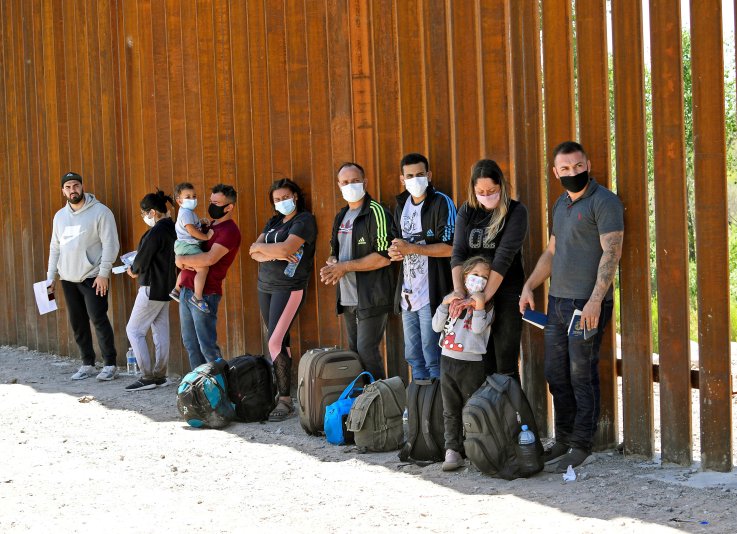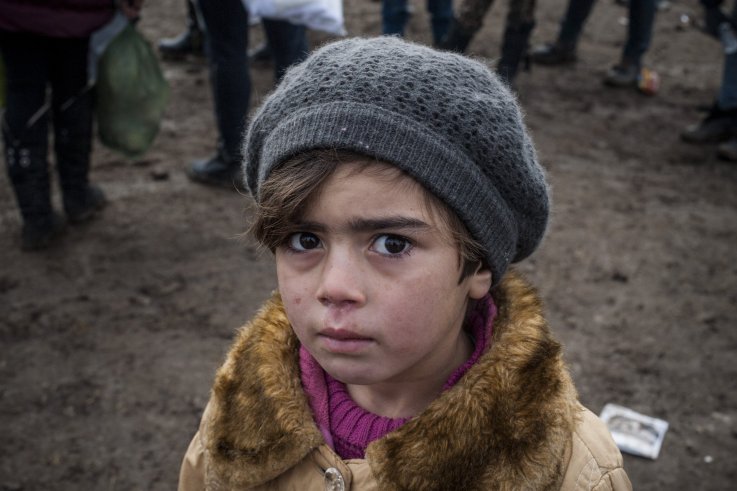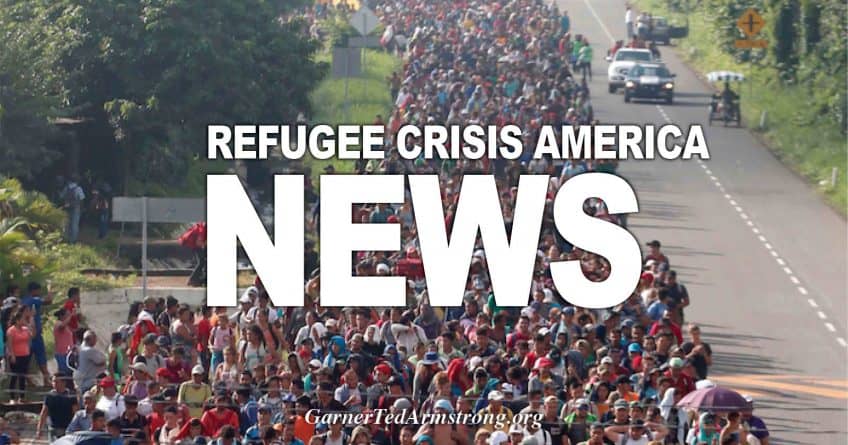The U.S.-Mexico border continues to be a beacon attracting individuals from many nations seeking passage into the United States. In the latest report from the U.S. Customs and Border Protection’s (CBP), the agency encountered over 180,000 people during the month of May.
Although countries in Latin America, led by Mexico, continue to be the source of most of the immigrants applying for entrance at the southern border, the number of immigrants from India, Turkey, Russia, and Romania are all up in year-to-date 2021 as compared to the same period in 2020.
Romania led all countries outside of Latin America with 3,435 people seeking entry to the U.S. so far this year, up from 276 in 2020.

“They are aware that President Biden has promised to treat migrants more humanely than Trump, and there may be a perception of an opportunity arising now to come to the U.S.-Mexico border,” Jessica Bolter, an associate policy analyst of U.S. immigration policy at the Migrant Policy Institute, told Newsweek. Here, migrants attempting to cross into the U.S. from Mexico are detained by U.S. Customs and Border Protection on May 21, 2021 in San Luis, Arizona.NICK UT/GETTY IMAGES
“We’re now seeing record numbers,” Jessica Bolter, an associate policy analyst of U.S. immigration policy at the Migrant Policy Institute, told Newsweek. “The main reason for ‘why now’ really has to do with a combination of the economic effects of the pandemic, as well as the messaging emerging, or the narrative emerging, about opportunities at the U.S.-Mexico border.”
As the United States continues down a path of economic and public health recovery, Bolter said America presents itself as a place of opportunity.
“The US, especially in the last six months or so, has really gotten its legs under it and is clearly on a pathway to recovery, both economically and health-wise,” Bolter said. “So, I think that maybe the lack of opportunity in home countries compared with the growing opportunities in the U.S. can’t be understated.”
She said the economic, social, and health effects of the pandemic made life even more difficult for people living under challenging circumstances abroad. News continues to circulate characterizing the border as being less hostile under the Biden administration, which Bolter said plays a role in people’s perceptions.
“They are aware that President Biden has promised to treat migrants more humanely than Trump,” Bolter said, “and there may be a perception of an opportunity arising now to come to the U.S.-Mexico border.”
While crossings at the border took their first major jump to nearly 72,000 in October under the Trump administration, President Biden’s increasing of the refugee cap and processing of those enrolled in the Migrant Protection Protocols are a departure from the previous administration’s policies of deterrence.
But there is something more fundamental than a perception of a friendlier America driving the migrant tide, she said.
“The pandemic has kind of exacerbated conditions that have existed in some countries for years, driving people to the U.S.,” Bolter told Newsweek.
Outside of people journeying from Central America, South America, and the Caribbean, Romanians represent the largest demographic encountered by CBP this year. Bolter said many of these Romanians are ethnic Romani, referred pejoratively as Gypsies, who’ve experienced decades of discrimination in both Romania and Europe as a whole, being both enslaved until the 19th century and murdered during the Holocaust.

Here, a refugee child waits for a security check after crossing the Macedonian border into Serbia on January 29, 2016.ARMEND NIMANI/AFP/GETTY
Given the relatively low numbers of migrants coming from other European and Asian countries, Bolter declined to speculate on the social conditions they may be facing. However, like the Romanians, most Russians were encountered as family units.
Bolter said that migrants fleeing with their families tend to be fleeing hostile political environments.
“Typically single adults tend to be more likely fleeing for more economic reasons,” Bolter said. “When migrants are fleeing as families, they tend to be fleeing more dire conditions and imminent persecution.”
In contrast, most Turks and Indians were encountered as single adults, which she said points toward economic migration. Yet, the economic situations these individuals face look different from both the Central American migrants journeying north and the poorest individuals they’re leaving behind in their home countries.
“Those who can afford flights do tend to have more economic resources available to them,” Bolter told Newsweek. “At the same time, it can almost seem a little counterintuitive, because if they’re coming to the U.S. for economic reasons but can afford the flight over, why do they need to come to the U.S.?”
As a possible explanation, Bolter said that these individuals, given their resources, may feel constrained in their home countries, as they may find their social and political freedoms being abridged. She said they view emigrating to the U.S. as an avenue toward being able to use the skills and resources they might have.
Josiah Heyman, director of the Center for Inter-American and Border Studies at the University of Texas, El Paso, studies human rights at the border. Like Bolter, he told Newsweek these individuals face intense pressures, both economically and politically.
“There they are people who are at high risk and are under pressure,” he said, “pressure in terms of persecution, pressure in terms of economic suffering.”

“When migrants are fleeing as families, they tend to be fleeing more dire conditions and imminent persecution,” Jessica Bolter, an associate policy analyst of U.S. immigration policy at the Migrant Policy Institute, told Newsweek. Here, migrants attempting to cross into the U.S. from Mexico are detained by U.S. Customs and Border Protection on May 21, 2021 in San Luis, Arizona.NICK UT/GETTY IMAGES
Heyman said the migrants coming to the U.S.-Mexico border from these non-western hemisphere nations represent a small total of those fleeing these nations. Visas to the U.S., Canada, and Europe are restrictive, so these individuals may need alternative means to reach their destination. Here is where Heyman said human smugglers play a role in directing these migration flows.
Ecuador stands as an important platform for smuggling organizations, Heyman said. It also requires a visa from few countries. Smugglers with connections to Ecuador or similar Central American nations may offer their services and connections to those looking to flee.
While the individuals fleeing may not have originally intended to undertake such a long journey, Heyman said they make the decisions with intention, which may motivate them to fly across the Atlantic, traverse Central America, then through Mexico, and finally to the United States.
“Smugglers get people from unusual locations to this border,” Heyman told Newsweek. “I think people are interested in migrating. They themselves may not be perfectly well informed, but they have some ideas about what they intend to do.”
[Disclaimer]








